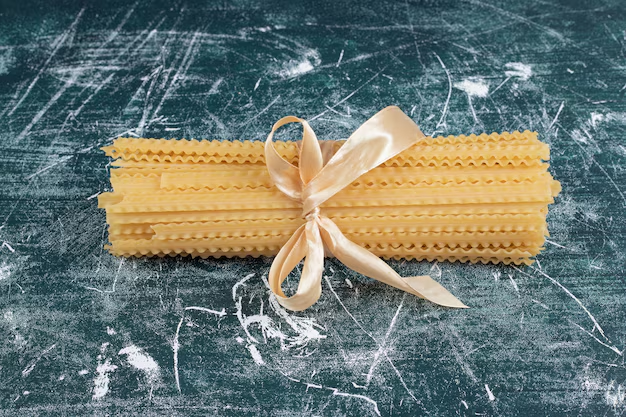How Long Will Your Spaghetti Last in the Refrigerator? 🥖🍝
Storing leftover spaghetti is a common household task, but knowing precisely how long it can remain in the refrigerator is crucial for safety and quality. After all, nobody wants to compromise their health or be greeted by an unpleasant surprise of spoiled pasta. Let's dive into understanding the shelf life of refrigerated spaghetti and related practical tips to ensure your leftovers remain delightful and safe to eat.
🍝 Understanding Spaghetti Shelf Life
Cooked pasta, like spaghetti, generally has a limited shelf life when stored in the refrigerator. On average, it remains good for 3 to 5 days if stored properly. The lifespan of your spaghetti can depend on several factors, including how it was prepared and stored. Below, we’ll explore these aspects in detail and provide guidance for maximizing the freshness and safety of your meals.
Key Factors Affecting Shelf Life
Preparation Technique:
- If your spaghetti was made with lots of perishables such as creamy sauces, seafood, or meat, it might have a shorter refrigerator lifespan compared to simpler oil or tomato-based variants.
Storage Conditions:
- The way you store your spaghetti can significantly impact its shelf life. Always ensure it's kept in an airtight container and placed in a fridge set at or below 40°F (about 4°C) to inhibit bacterial growth.
Original Freshness:
- Using fresh ingredients and ensuring the pasta hasn't been left out at room temperature for extended periods before refrigeration will help it last longer.
🍽 Cooking and Preparing Spaghetti
The initial steps of preparation can greatly impact how long spaghetti remains good in your fridge.
Cool Rapidly: After cooking, allow spaghetti to cool slightly but quickly to reduce time spent at bacteria-friendly temperatures.
Use Airtight Containers: Storing spaghetti in sealed, airtight containers prevents moisture loss and contamination.
Label Dates: Always label the storage date on your container, as this will help track freshness easily.
🥣 Best Practices for Refrigerating Spaghetti
Employing proper storage practices can extend your spaghetti’s refrigerator life and keep it tasting great.
Why Storage Method Matters
Airtight Containers: Prevent exposure to air and help maintain moisture and flavor.
Size Consideration: Use appropriately sized containers to minimize excess air space that can quicken spoilage.
Separate Sauces: If possible, store pasta and sauce separately. Different components may degrade at different rates.
Refrigeration Tips
Keep the Fridge Clean: Frequent cleaning keeps away odors and contamination, contributing to longer shelf life.
Check Temperature: Consistently ensure your fridge is at the recommended 40°F for optimal storage.
❌️ Warning Signs: When to Toss It
Recognizing spoilage indicators is crucial for health and safety.
Off Odor: A sour or unusual smell is a classic sign that your spaghetti is past its prime.
Visible Mold: Any sign of mold means it’s time to discard the spaghetti immediately.
Texture Changes: Slimy or overly dry pasta is a definite sign that it's been stored for too long.
🍕 Transitioning Into Related Pastas and Their Storage 🥗
While spaghetti is a staple, exploring how to refrigerate other pasta varieties may be beneficial. Most cooked pastas share similar storage guidelines, but sauces and additions can vary their shelf life.
Storing Other Pasta Types
Whole Wheat and Gluten-Free Pasta: These varieties might have slightly different textures and may require careful monitoring for freshness.
Stuffed Pastas (Ravioli, Tortellini): Tend to have a shorter shelf life due to perishable fillings. Aim to consume within 2-3 days.
Sauce Storage
Oil-Based Sauces: Usually last a bit longer compared to dairy or cream-based sauces. Store these separate from the pasta if possible.
Tomato-Based Sauces: Generally more resilient but always keep an eye (and nose) on freshness.
🧀 Tips for Freezing Pasta
If you can’t consume your leftovers in time, freezing is a fantastic alternative to prolong usability.
Freezing Guidelines:
- Let your pasta cool completely before freezing.
- Use freezer-safe, airtight containers or bags.
- For best results, freeze each component separately and combine them when reheating.
✅ Quick Summary: Storing Your Pasta Like a Pro
Here’s a handy list of tips to prolong pasta life in the fridge:
- 🚨 Store leftovers promptly: Within two hours of cooking to minimize bacterial growth.
- 🔒 Use airtight containers: Prevents the pasta from drying out or absorbing odors.
- 🗓 Label and date: Always label your storage date to ensure you stay within safety windows.
- ⏲ Keep track of fridge temperature: Essential to maintain food safety.
- 👃 Monitor for spoilage: When in doubt, rely on sight and smell.
Maintaining food safety with your spaghetti and other dishes is important for health and flavor preservation. By following these comprehensive procedures and practices, you can enjoy your pasta dishes worry-free, knowing you’re equipped with the best food storage strategies. Eat safely and enjoy your spaghetti at its freshest! 🍝
